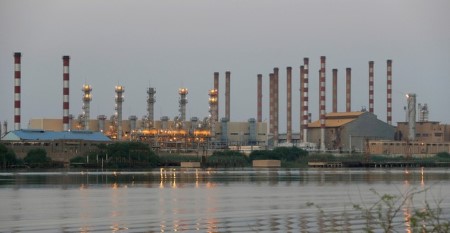




Quarterly Economic Growth Release: More BSP cuts to come
 DOWNLOAD
DOWNLOAD

Monthly Economic Update: Fed catches up
 DOWNLOAD
DOWNLOAD

Inflation Update: Steady and mellow
 DOWNLOAD
DOWNLOAD


Oil prices jump but post third straight weekly fall on economic woes

HOUSTON, May 5 (Reuters) – Oil prices rose on Friday but fell for the third straight week after a sharp fall earlier this week ahead of benchmark interest rate rises and on concern that the US banking crisis will slow the economy and sap fuel demand.
Brent crude closed USD 2.80, or 3.9% higher, at USD 75.30 a barrel. US West Texas Intermediate settled up USD 2.78, or 4.1%, at USD 71.34 after four days of declines that sent the contract to lows last seen in late 2021.
The Brent benchmark finished the week with a decline of about 5.3%, while WTI plunged 7.1%, even after the rebound on Friday. Both benchmarks were down for three weeks in a row for the first time since November.
“Crude is trying to reverse the recent washout in prices triggered by higher interest rates and recession fears mostly in the banking sector,” said Dennis Kissler, senior vice president of trading at BOK Financial.
For some analysts, fundamentals in the physical market are stronger than the futures market would indicate.
“Rather than underlying fundamentals, the selling frenzy over the past week has been driven by worries about demand linked to recession risks and the strain in the US banking sector,” said PVM oil market analyst Stephen Brennock.
“The upshot is that there is a big disconnect between oil balances and oil prices.”
Commerzbank analysts noted oil demand concerns were overblown and expect a price correction upward in the coming weeks.
Equities, which often move in tandem with oil prices, also rose.
A better-than-expected jobs report helped ease some fears of an imminent economic downturn, spurred in part by renewed banking fears. Investors also broadly expect the Fed to pause rate hikes at its June policy meeting.
In China, however, factory activity contracted unexpectedly in April as orders fell and poor domestic demand dragged on the sprawling manufacturing sector.
However, expectations of potential supply cuts at the next meeting of the OPEC+ producer group in June have provided some price support, said Kelvin Wong, a senior market analyst at OANDA in Singapore.
US oil rig count, an indicator of future output, fell by 3 to 588 this week, data from oil services firm Baker Hughes showed.
(Reporting by Arathy Somasekhar in Houston; Additional reporting by Shadia Nasralla and Andrew Hayley in Beijing; Editing by Jan Harvey, Alexander Smith, David Gregorio, Emelia Sithole-Matarise and Jonathan Oatis)
This article originally appeared on reuters.com





 By Reuters
By Reuters